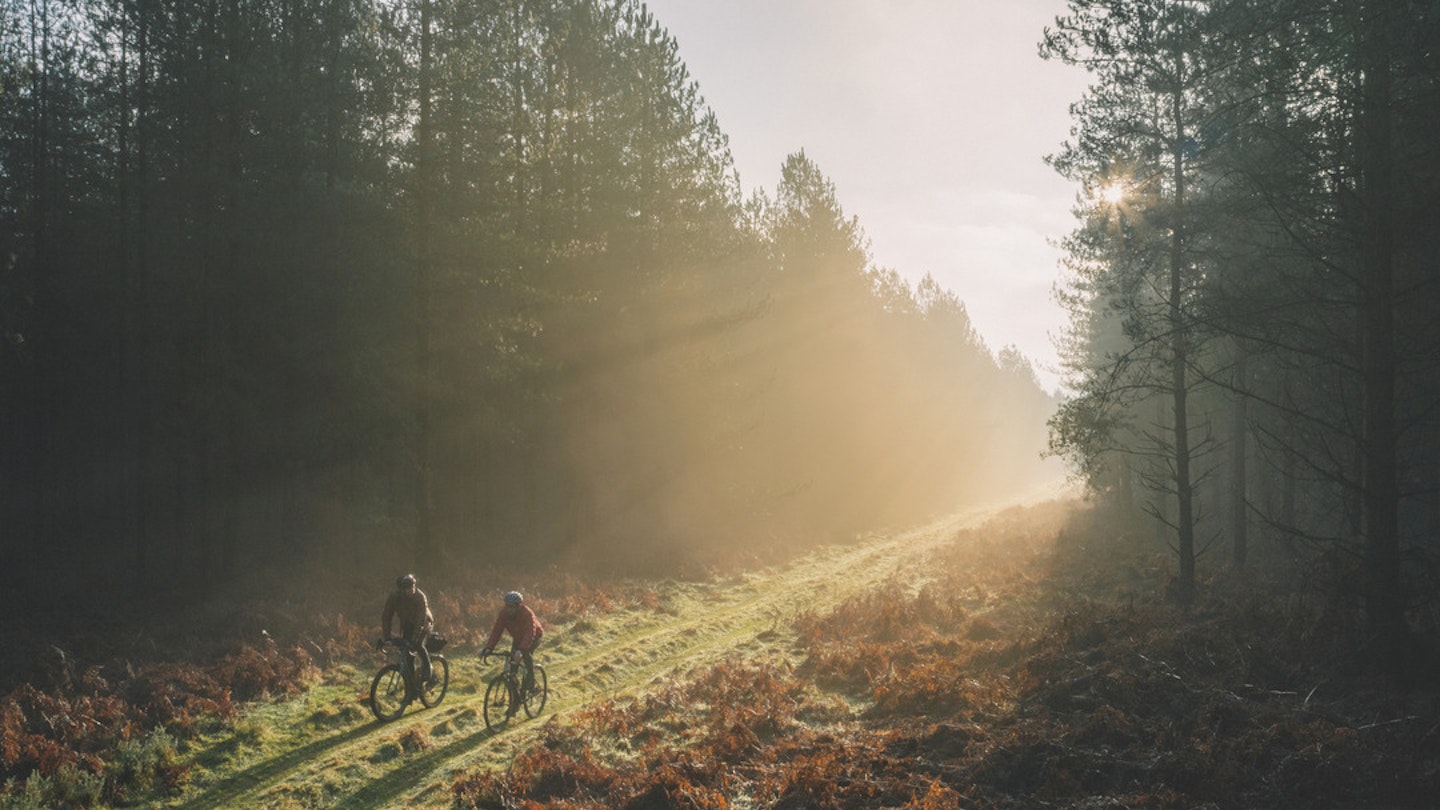The popular bike touring pastime, which takes place worldwide, has improved with the introduction of eBikes. These electric-assisted bikes help your tour become a little bit more bearable on the legs with the help of an electric motor.
If you’re unfamiliar with eBikes, we have plenty of information in this article that will help you with what to look for in a perfect eBike. Still, this article is bursting with products that will help you make the most of your tour, whether you’re camping or stopping off at hostels and hotels along the way.
Editor's choice:
• Best overall touring eBike: Cannondale Topstone Neo Sl 2 Disc Electric Gravel Bike 2023
• Runner-up: Haibike Trekking 4 Women’s 2022 - Electric Hybrid Bike
• Best touring tent: Blackthorn 1 Man Tent
• Best touring pack: Ortlieb Frame Pack 4l
• Best touring jacket: Rapha Men’s Brevet Insulated Gilet
A bike tour is hopping on your bike, loaded up with what you need for a good few days in the saddle. You cycle from point to point, staying over in various locations and repeating the process the next day for however long you like. eBike touring is much the same, except the bikes you ride, are electrified - this can only add to the enjoyment as often when bike touring, you’re carrying all your kit and equipment you need, so your bike can quickly become very heavy. The added electrical boost can be a big bonus for climbs and speeding up flats.
Let’s begin at the beginning. If you don’t have one already, you’ll need an eBike - here's our list of cycles which will help make your eBike tour a little bit easier.
Best overall touring eBike
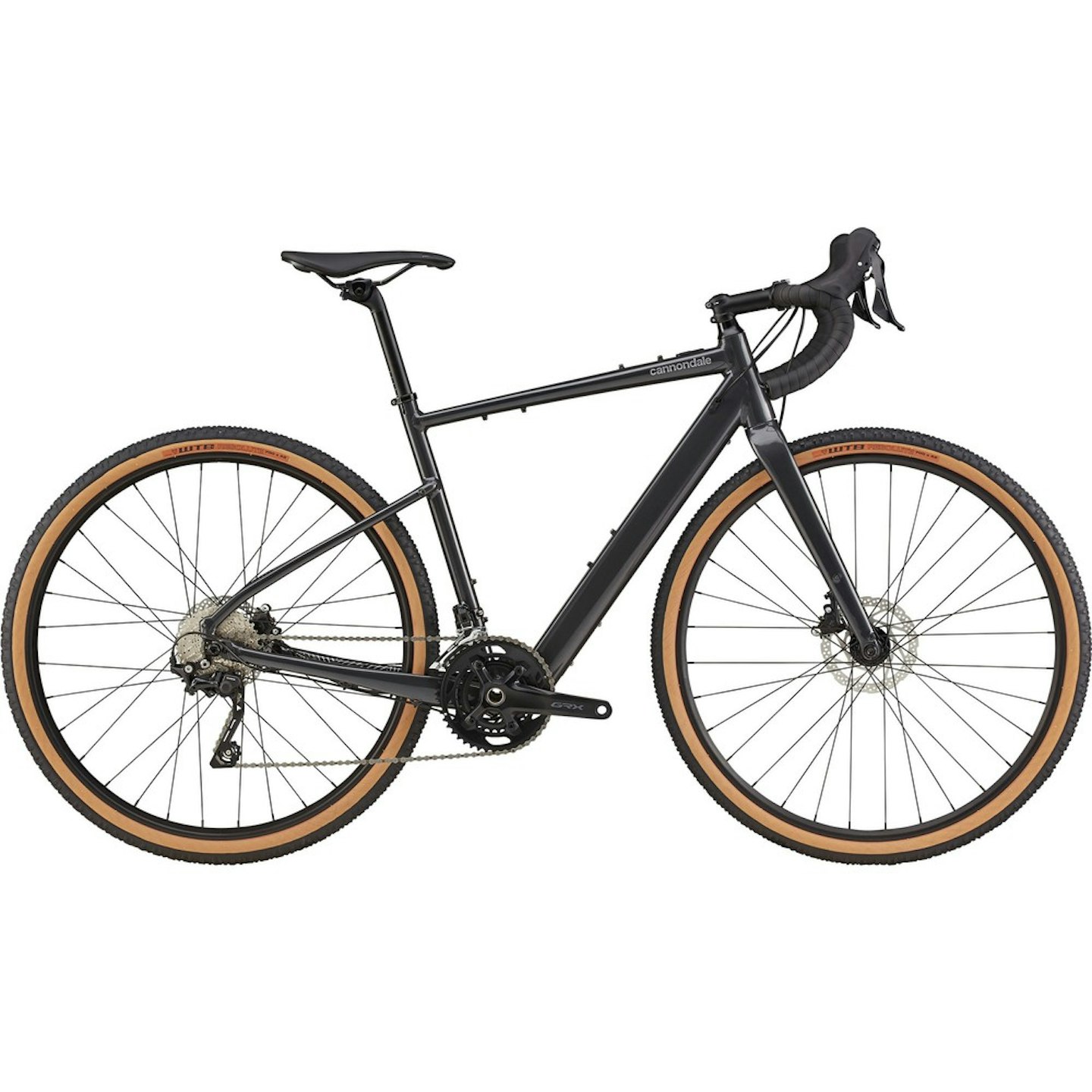
www.tredz.co.uk
The Cannondale Topstone uses the lightweight and powerful Mahle ebikemotion X35+ motor system, which fits snuggling in the rear wheel hub and offers different levels of assistance maxing out at 250 watts of pedal assist. These are controlled by a button on the bike’s top tube.
The upside to these systems is that they’re lightweight and very discrete. The downside is they don’t have that much range in them; this will be good for 47 miles depending on which power mode you use – the higher the assist level, the more it will reduce battery life.
The endurance-focused frame comprises aluminium with carbon forks – it can accommodate up to 42mm wide tyres and uses a Shimano GRX 2 x 10-speed gearing system. Hydraulic disc brakes provide confidence-inducing stopping power over muddy trails or soaked tarmac.
Pros
- Lightweight
- Discreet electric motors
Cons
- Limited range
Runner-up
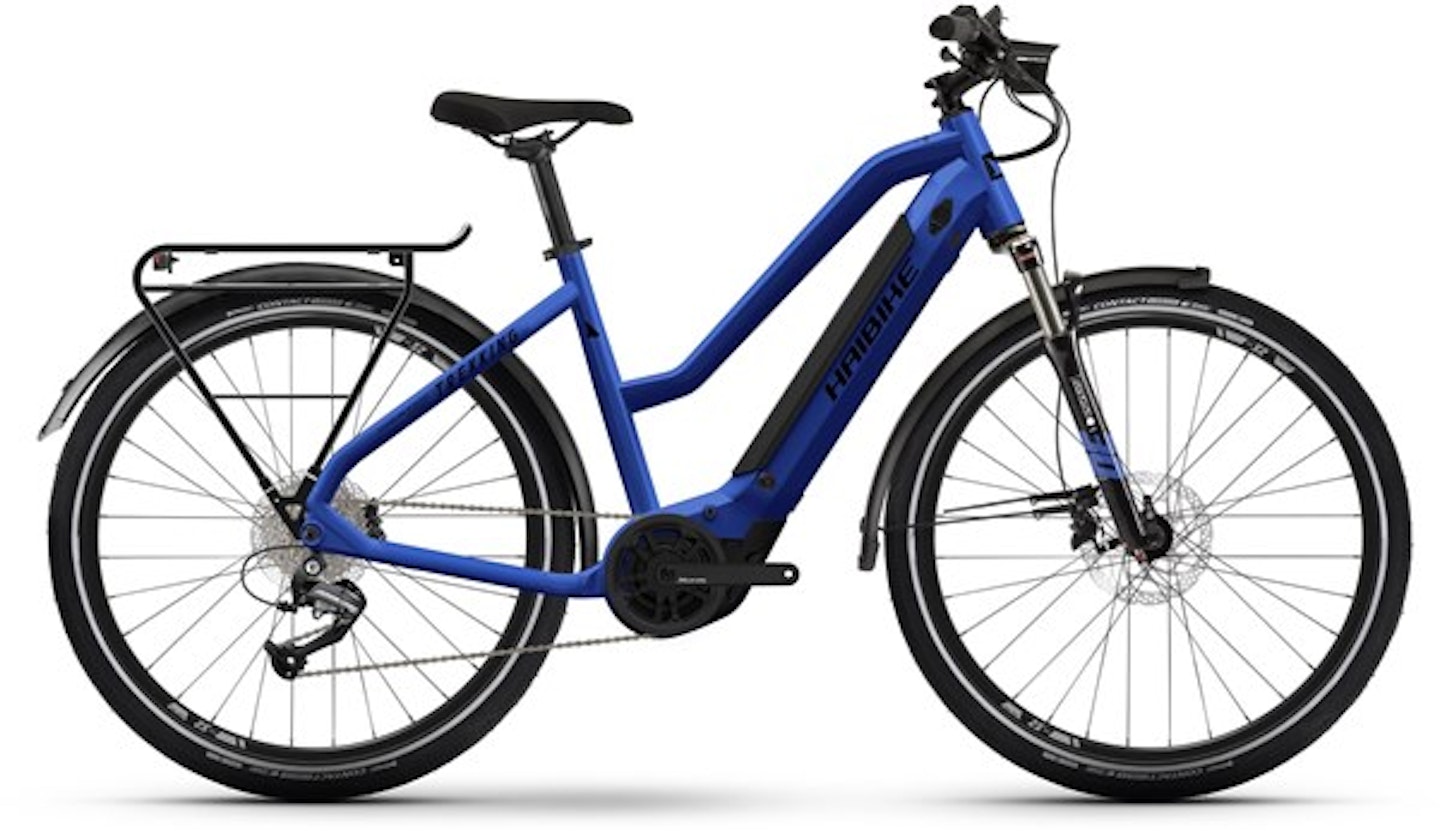
www.tredz.co.uk
Something a bit more robust and comfortable when it gets to off-road riding is the Haibike Trekking 4. With front suspension and excellent big thick chunky tyres, it’ll hold a little bit more weight and help to flatten out the bumps and tree roots you may encounter.
A 6061 aluminium frame holds a 500Wh battery pack with a Yamaha PW-TE System, delivering 250 watts and 60Hm of torque to get you on your way. The larger motor and battery pack increases weight but packs more of a punch and also increases the time between charges.
Shimano Altus gears are low in the mountain bike range but are still very respectable for this bike.
Pros
- Robust
- Good battery size
Cons
- Heavy
Best eBike frame
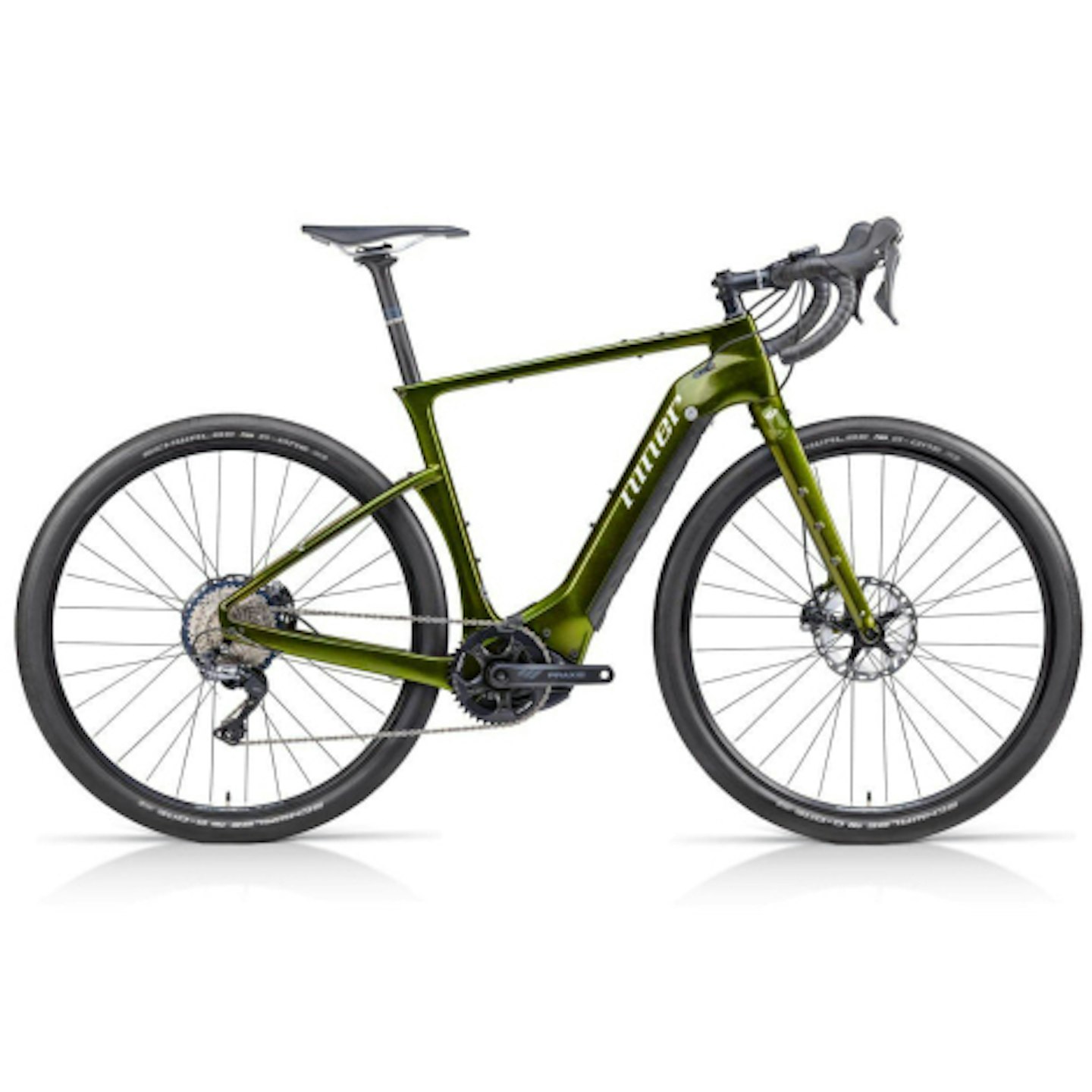
www.merlincycles.com
Providing a bit of balance between the two above is the Niner RLT E9 RDO Gravel eBike. While it has more of a road bike set up, the downtube holds a 500Wh Bosch battery pack with the Bosch GEN4 Performance Line CX giving you ample assists on the climbs.
The slightly knobbly Schwalbe G-One Bite Evo TLE tyres will give you some grip if it gets muddy but are much better suited to tarmac and slightly loose gravel tracks. Shimano GRX gears are adequate but what you’re paying the money for here is the powerful Bosch motor and full carbon frame - which will be okay over the slightly bumpier stuff due to its flexion.
Pros
- Balanced performance
- Carbon frame
- Powerful battery
Cons
- Gears are just okay
The tent
This can be a tricky choice because if you’re going to be camping, you’ll need a tent which is light and big enough for either yourself or two of you – it’ll also need to pack down small to go in one of your pannier racks on the bike.
Best touring tent
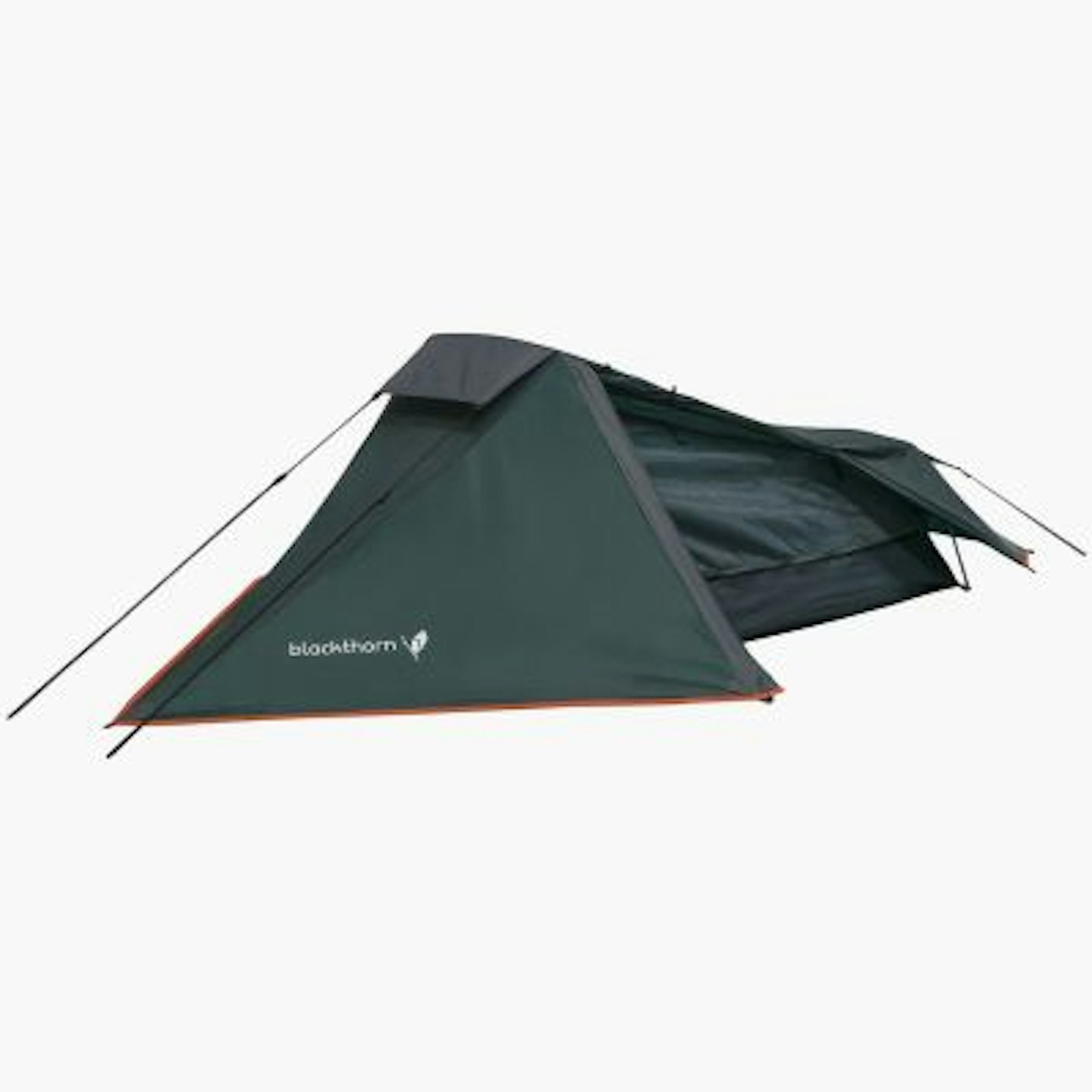
highlander-outdoor.com
Superlight weight at 1.5kg and packed down to a stuff sack that measures 35x12x12cm, this durable tent by Blackthorn is perfect for one, and the fibreglass poles mean you won’t wake up to a collapsing tent.
Made of waterproof and breathable fabric, it keeps a super low profile to avoid buffeting by the wind and rain and has an inbuilt bug net. A huge bonus is that this tent can be pitched in five minutes – so after a long day in the saddle, it won’t be long until you can rest your head.
Pros
- Light
- Waterproof fabric
Cons
- Snug
Best tent build
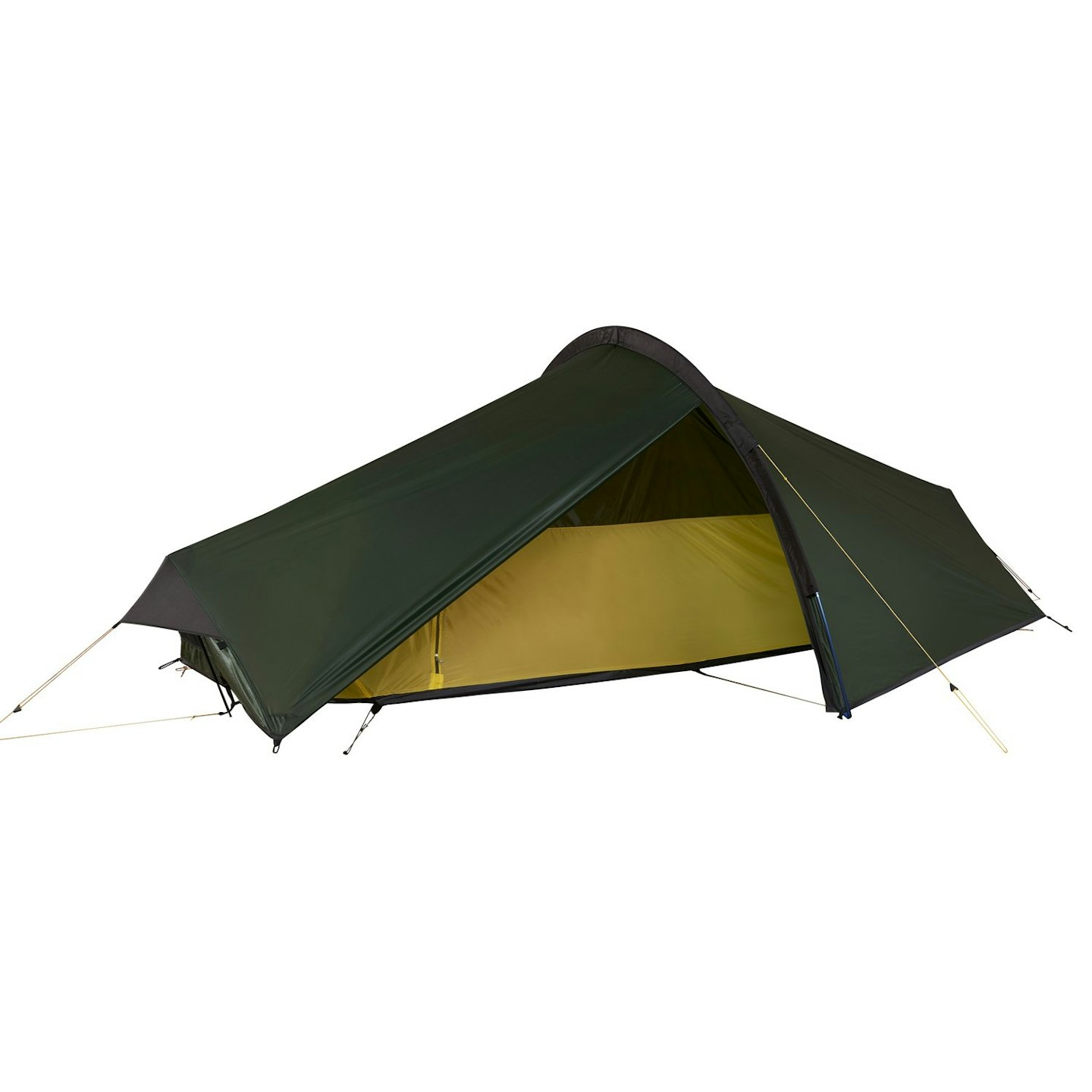
www.mountainwarehouse.com
The Terra Nova packs down to just 30cm in length, and although it is advertised as a one-person tent, it could fit two (who don't mind getting close). The waterproof fabric has a 3000mm hydrostatic head rating, and will be suitable for mid-heavy weight showers, so it should be fine for the UK and the European continent. The sewn-in groundsheet will keep bugs and insects at bay and weigh just 1.1kg. Overall, this is super lightweight and portable.
Pros
- High-quality
- Can fit two, snuggly
Cons
- Takes a bit to set up
Best summer tent
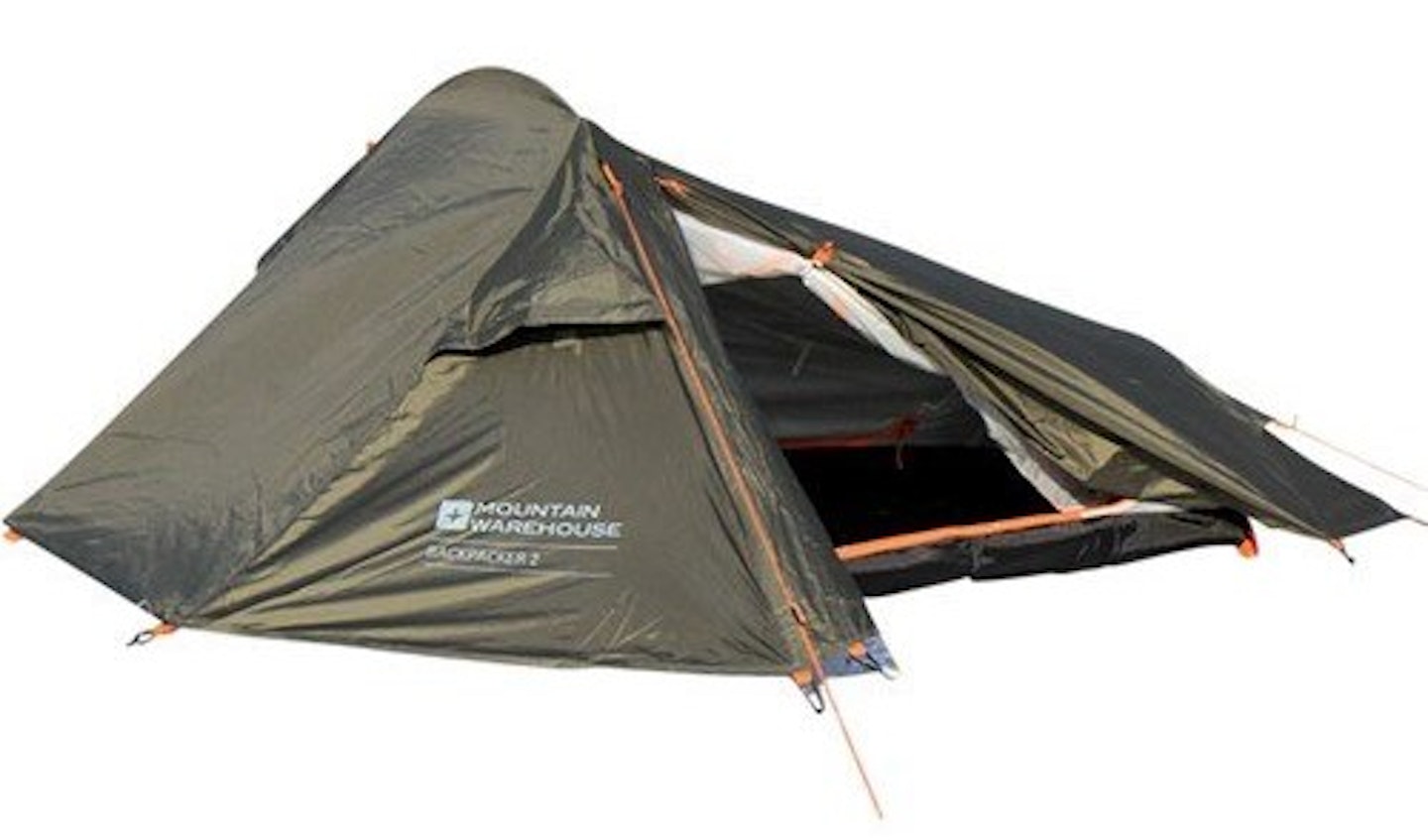
www.mountainwarehouse.com
Need something a little bit bigger? Mountain Warehouse offers this two-person tent with aluminium poles keeping things solid and lightweight. All seems are taped, providing a watertight seal, and a sewn-in groundsheet prevents insects and drafts from getting into the tent. 2000mm hydrostatic head rating leans this tent more towards summer than spring or autumn.
Obviously, with a two-person tent, with aluminium poles, the weight is slightly higher at 2kg, and the pack-down length is also increased to 51 x 13 x 13cm to accommodate the extra person.
Pros
- Room for two
- Ideal for summer
Cons
- Weighty and bulkier
Best tent for space
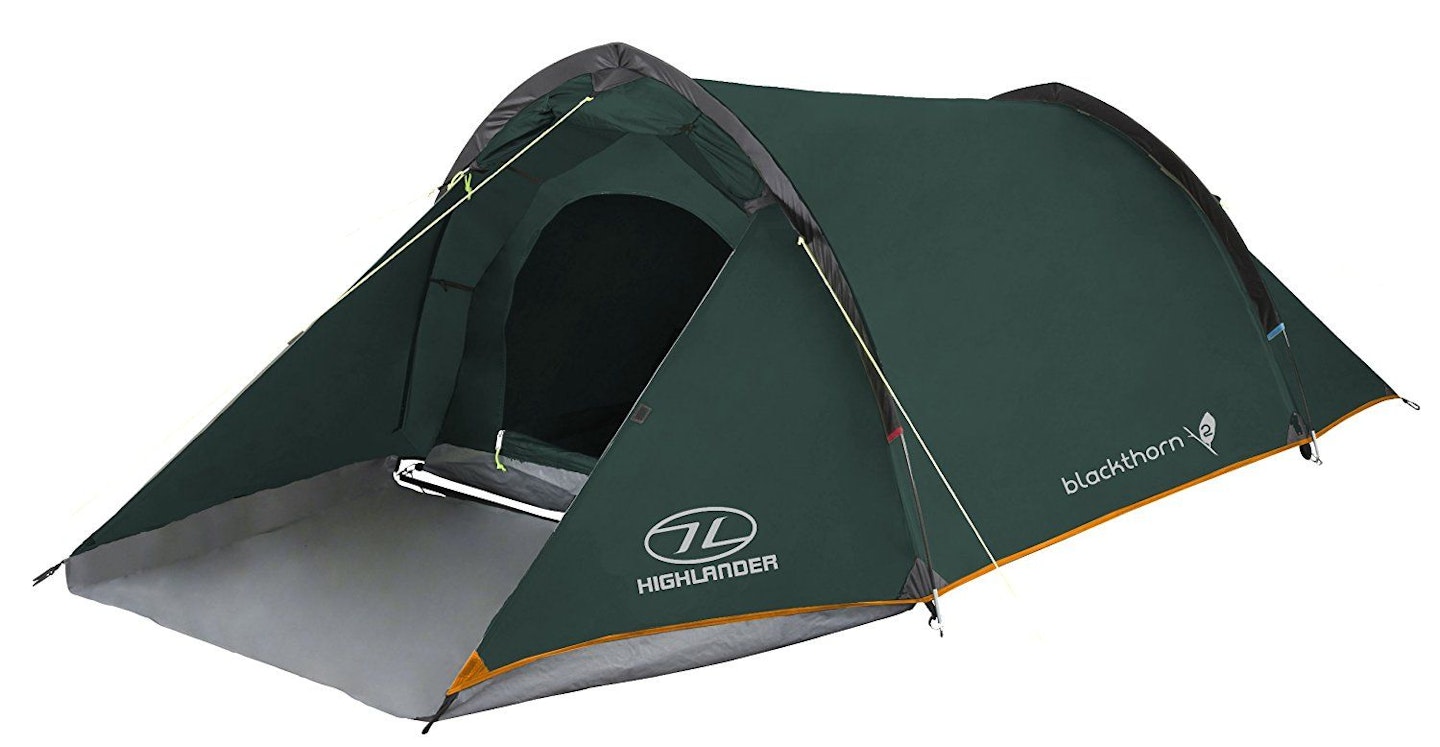
highlander-outdoor.com
This Blackthorne two-person tent has a nice little porch area where you can sit with a reduced breeze, store a few items and even cook.
It is the heaviest of the lot, weighing 3kg and also the largest when packed down at 55 x 15 x 15cm. But it pitches in five minutes and packs down almost as quickly, too. Taped seams, a polyethene ground sheet to keep you dry and a hydrostatic head rating of 2000mm round out the spec. So, best for summer.
Pros
- Spacious
- Great shelter
Cons
- Quite heavy
The packs: Pannier bags and frame bags
With the boom of bike touring, there's been a massive boom in frame bags and pannier bags. There are many different types that can be equipped as storage for every area on the bike, from the frame to the forks. You may be surprised by how much you can carry on the bike.
Just be aware that if you’re using a frame bag, it may not be compatible with low-step frames. Plus, the more space you take up with bags, the higher the weight of the bike. You may have to lose your bottle holders, too.
Don't forget you can always rely on a good cycling backpack, too.
Best touring pack
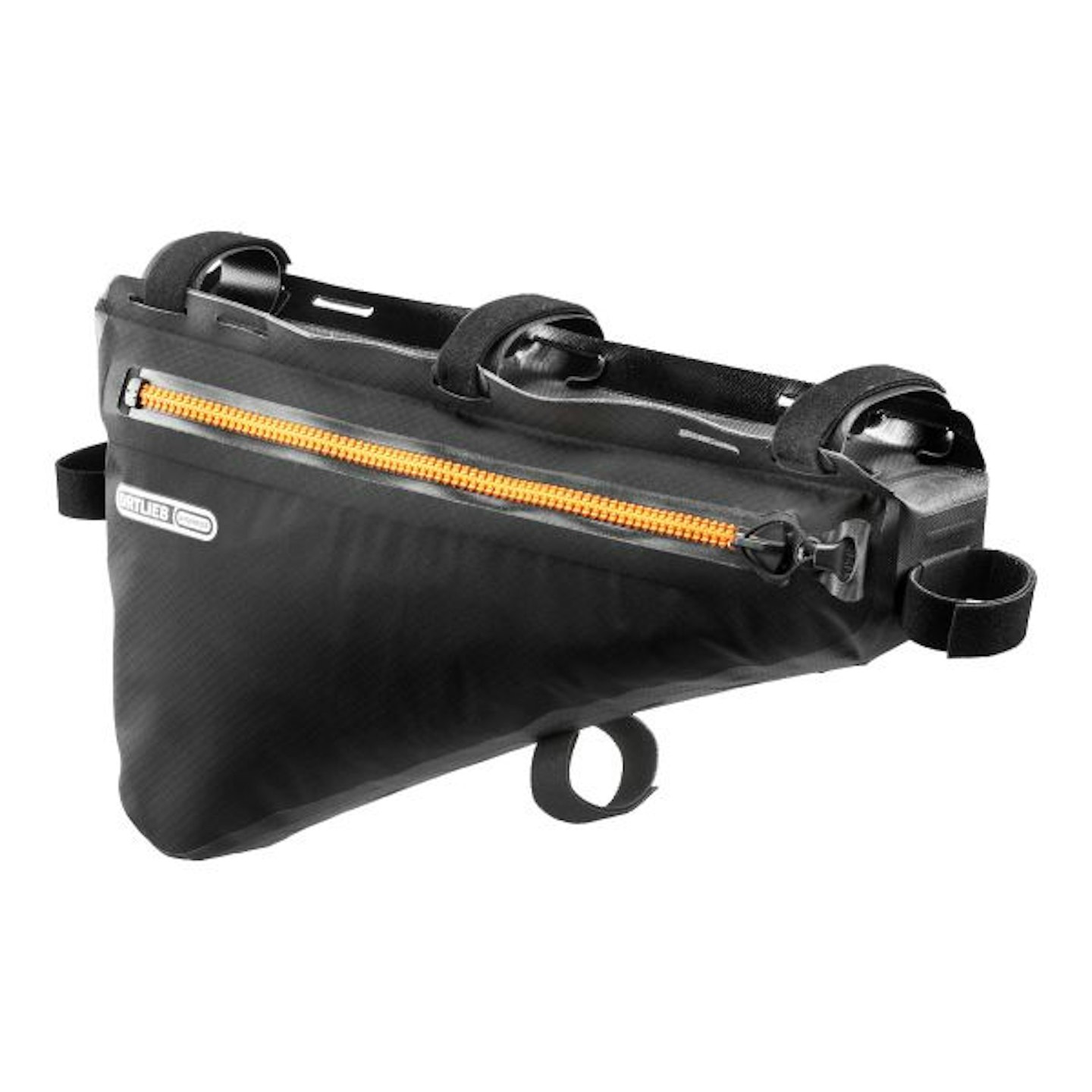
www.ortlieb.com
Attaching to your seat tube and top tube, this bag from the well-respected brand Ortlieb offers an extra four litres of storage space and helps keep your centre of gravity low. The hook and loop fasteners help keep the bag friendly and secure to your bike.
This is perfect for your heavier equipment like tent poles, tools and food; with a weight of 200g, it’s easy to see why this is a preferred choice for many bike tourers.
Pros
- Excellent design
- Sturdy
Cons
- You'll probably lose your bottle holder
Best waterproof pack
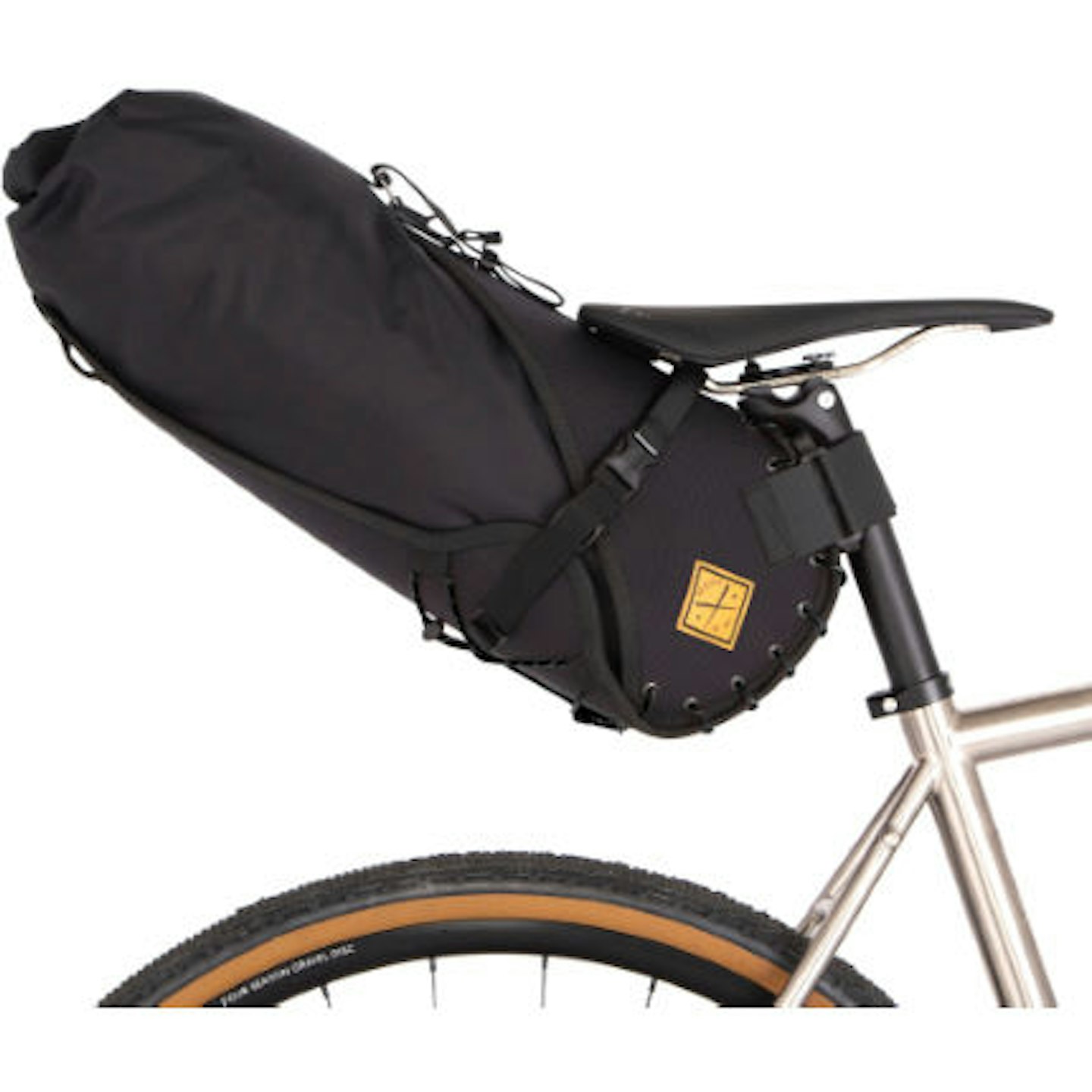
www.wiggle.co.uk
This saddle bag is available in two sizes, 8 and 14 litres; this saddle bag goes up and behind you to help store what you need to carry on the bike – keeping the weight over the back wheel. The pack is waterproof and also doubles as a mudguard, which is handy.
With the dry bag being held in its holster, you can take the bag out without having to de-mount anything, meaning that access is quick and easy.
Pros
- Easy access
- Handy mudguard
Cons
- Wish there were more size options
Best storage space pack
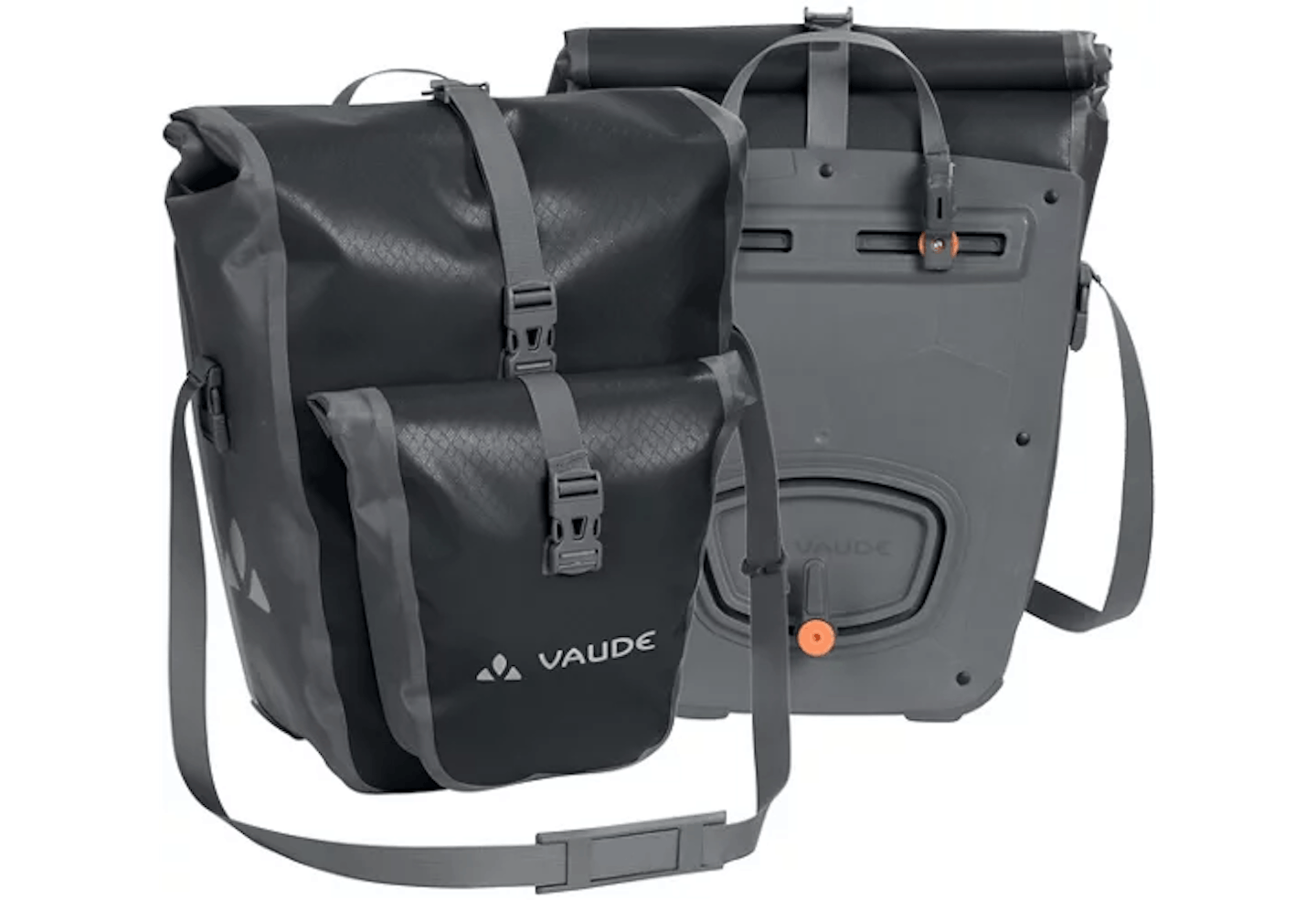
www.chainreactioncycles.com
For the maximum amount of storage, you’ll need a pannier rack – no other storage option on the bike will give you as much space as these but obviously, with more space and storage comes more weight – these pannier bags have enough for up to 51 litres of storage. They can hold a maximum of 25kg.
Pros
- Loads of storage space
- Well-made
Cons
- Adds loads of weight
Best lightweight pack
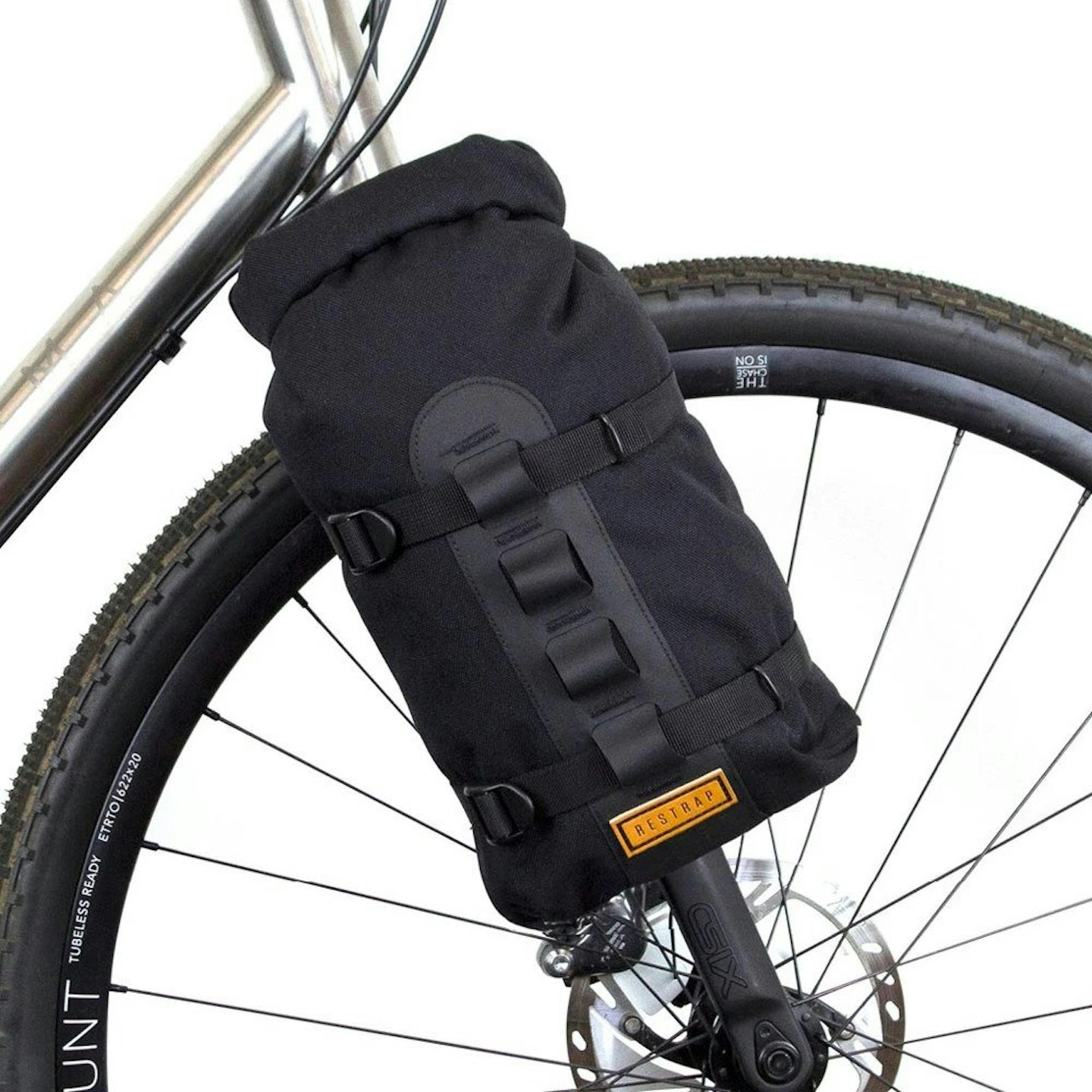
www.wiggle.com
No space is safe from the ability to add storage - these fork bags can go on your front forks and offer 5 litres of storage space each. Nice and light at 198 grams, four attachment loops on the side give you maximum options when attaching to the bike.
Pros
- Clever use of space
- Lightweight
Cons
- Limited storage space
The clothes: On and off the bike
This bit is crucial because you’ll want to be comfortable on and off the bike, and the last thing you’ll want to be is either too hot or too cold. Equally, you don’t want to carry endless clothes supplies due to weight and luggage capacity.
The essentials are a good quality pair of shorts, a jersey and a jacket. You may need two jackets on the bike, one for warmth and one to keep you dry.
Off the bike, you’ll want something comfortable and warm for the evenings because when you’re out in the wild, once the sun drops, the temperature drops very quickly, too.
If you’re into cycling already, you’ll likely have most of what you need, and the great thing about cycling clothing is that it can be packed down small to make a massive space-saving difference.
Here is a list of some stuff we couldn’t do without when touring on our bikes.
Jackets and Gilets
These are essentials for the colder mornings and evenings. They can help keep the chill off while you get up to temperature.
Best touring jacket

www.awin1.com
These insulated gilets from Rapha are perfect for the later morning rollout and lunchtime when the temperature is slightly more relaxed. It packs down small enough to be rolled up and stored in your back pockets, while the two-way zip will allow for more excellent breathability without taking the gilet off.
The insulation is made with recycled Polartec Alpha insulation to provide warmth and breathability, so you shouldn’t overheat during more arduous efforts up hills.
Pros
- Insulated
- Recycled materials
- Breathable
Cons
- Limited sizes
Best insulated jacket
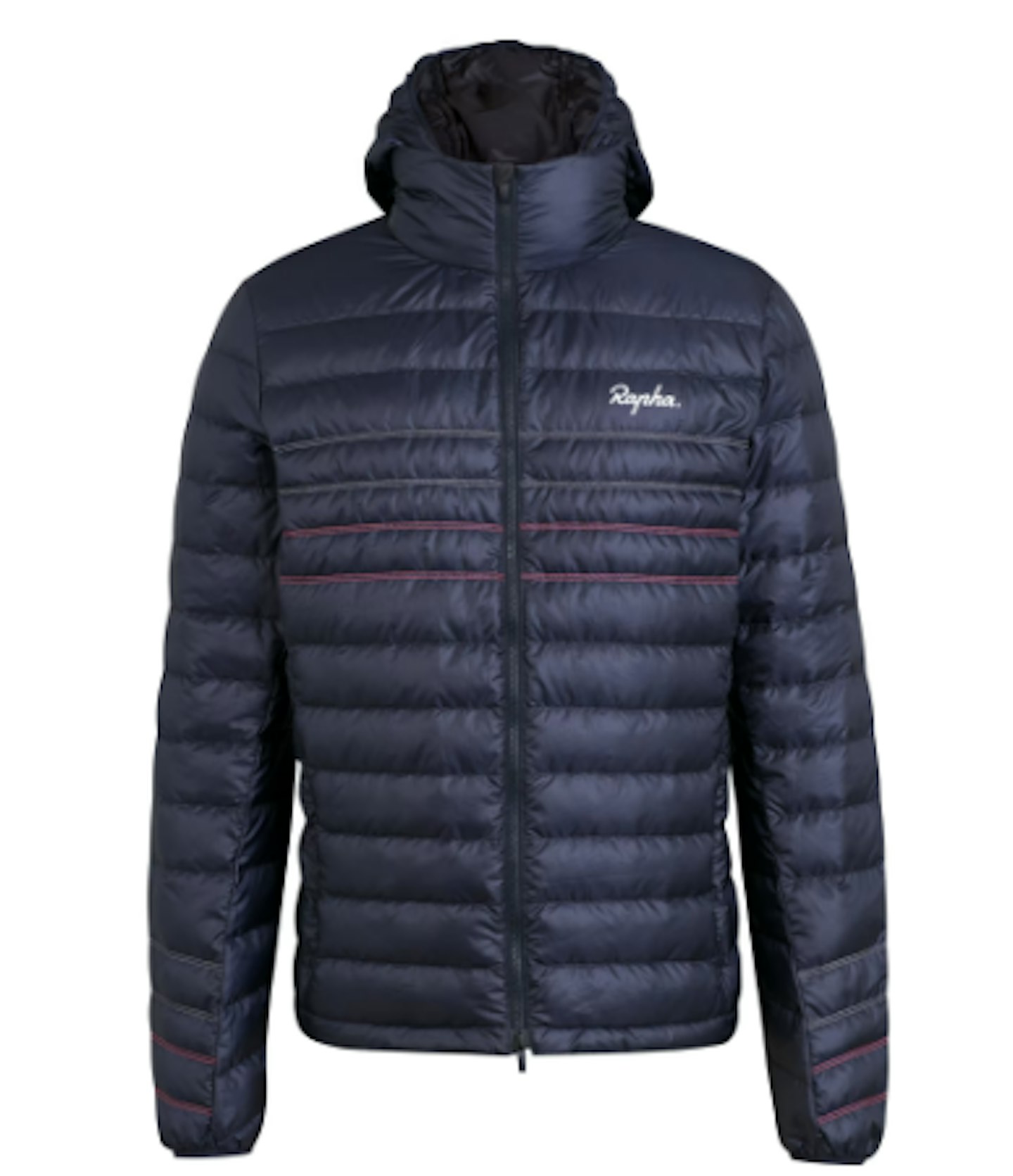
www.awin1.com
A high price for sure, but when it can be worn on and off the bike, it's essential. Stopping after a few hours in the saddle, you can quickly feel the cold, which is why a nice warm packable jacket will keep you healthy and safe.
Made up of a lightweight woven nylon outer fabric and willed with 850-fill-power down to create an insulating layer which is snuggly warm in cold conditions. Rapha works closely with Allied Feather, using a fully traceable, responsibly sourced down – each jacket comes with a lot number which allows you to track the exact origin of the fill. The explore jacket is also treated with a water-repellent coating to retain loft and lock in warmth even in damp conditions.
Pros
- Super insulating
- Wear on and off the bike
- Responsibly sourced
Cons
- Not suitable for all conditions
Best value jacket
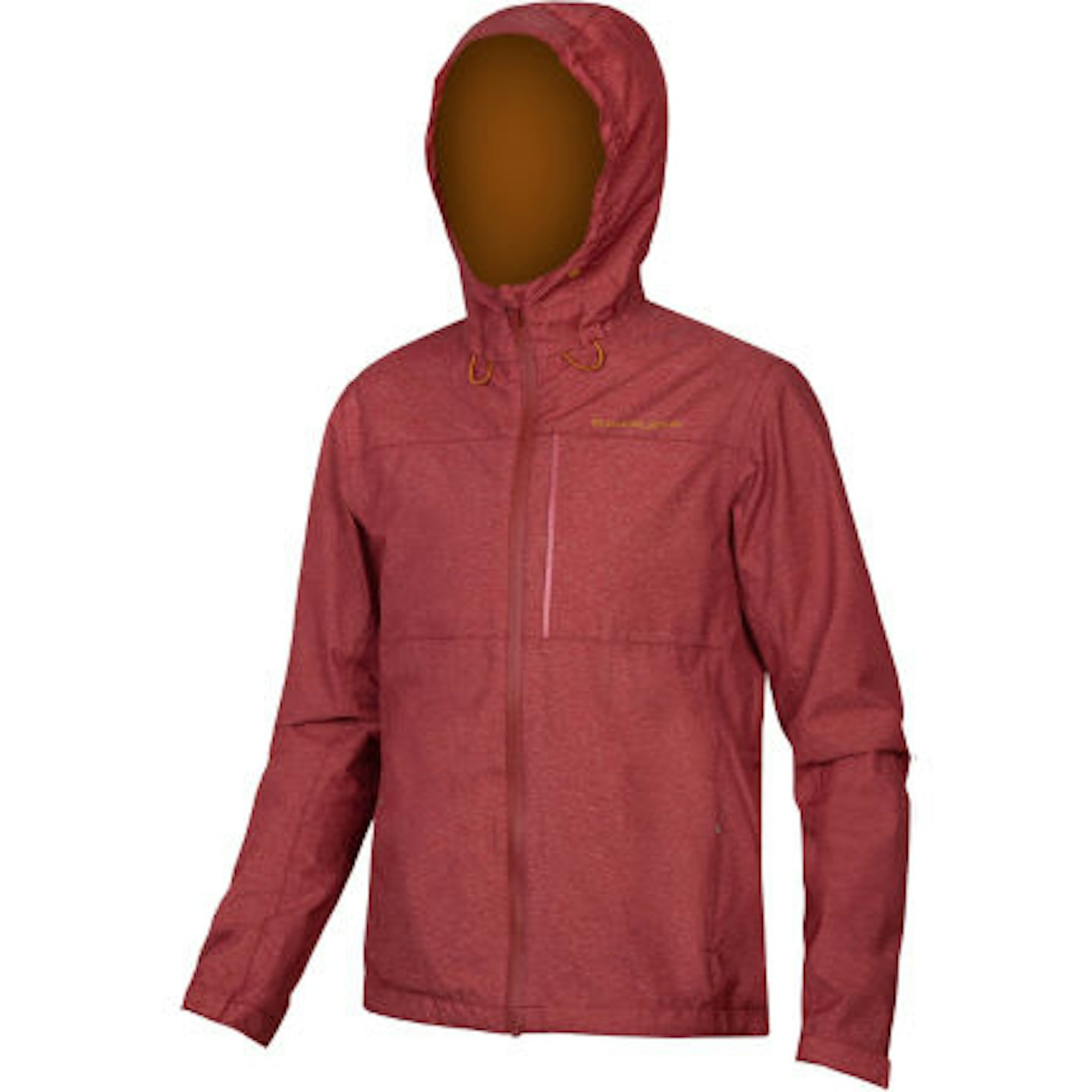
www.wiggle.co.uk
If you fancy something a little bit more relaxed in fit and much lower in cost, these from Endura are much more friendly on the bank balance and have some price-changing colour options. Made from a two-layer waterproof and breathable fabric, helping to keep the rain out while also letting sweat escape, so you don’t get that sticky coat feeling during strenuous efforts.
An adjustable hood, front zip with a storm flap and Velcro cuffs help keep water and rain at bay, so stay dry inside as the jacket does the work for you.
Pros
- Good price
- Well respected brand
Cons
- Endura are a 'budget brand' so we would worry about durability
Shorts and trousers
This can be a tricky option. Do you go for something loose-fitting so that you can casually hop on and off the bike, or do you go for lycra to feel more relaxed when you change out of your ‘cycling’ clothes at the end of the day?
That’s up for you to decide, but here are some options.
Shorts
Best quality shorts

These super casual cycling shorts have all the tech from Castelli and a super lightweight fabric to boot – two wide side pockets and an internal phone pocket means you’ll have all the space you need to store things on your ride and somewhere to put your hands after. There is even a zippered security pocket on the back for your wallet.
In terms of length, they finish just above the knee.
Pros
- Very well respected brand
- Nice materials
Cons
- Plain design
Best durable shorts
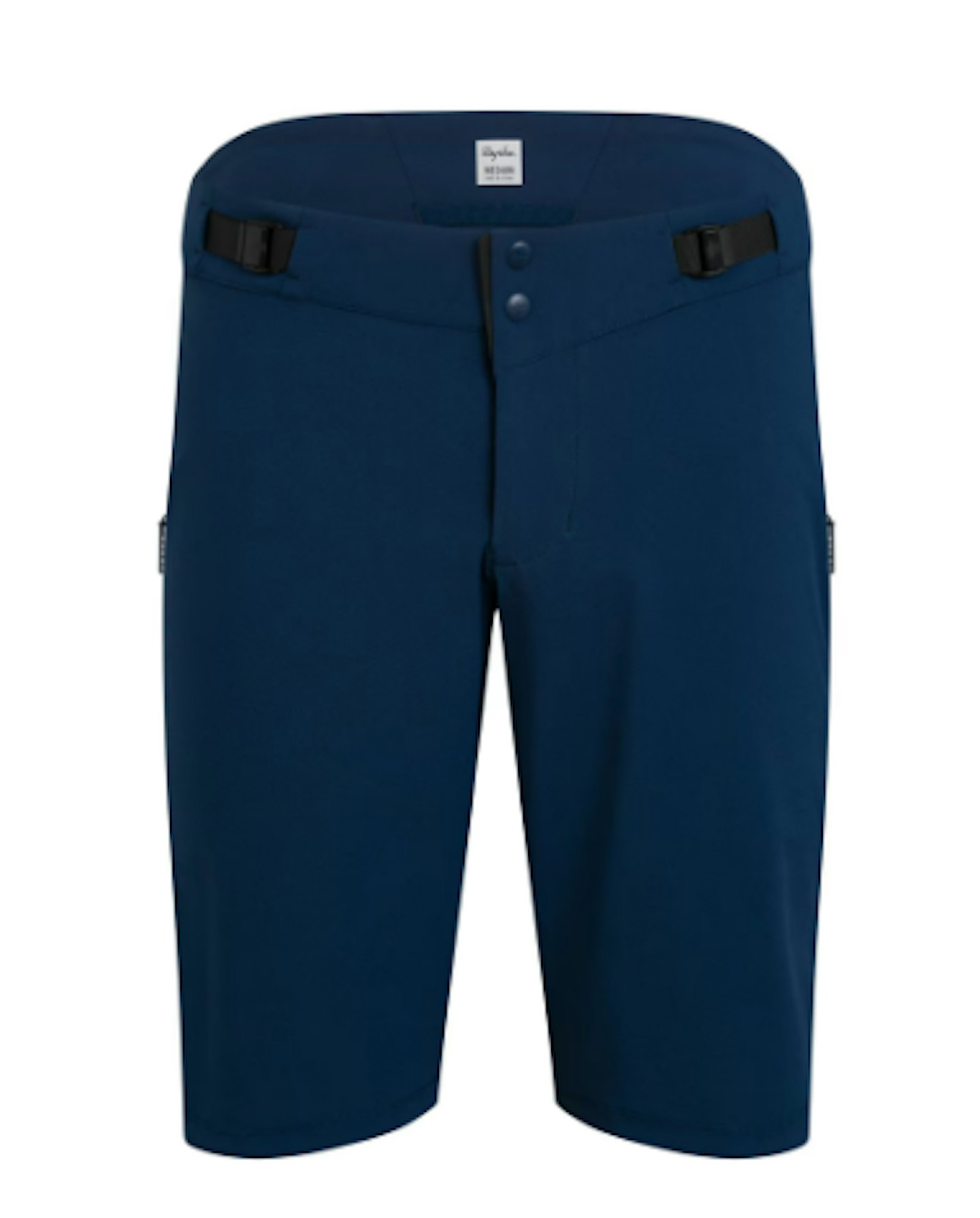
www.awin1.com
Made for warmer conditions and designed to be worn over your bib shorts or trail liners, these trail shorts are great for all-day comfort in the saddle; plus, they don’t look as serious off the bike either. The four-way stretch material is abrasion-resistant, providing durability and breathability. Rapha also thinks about all the small details by having a Duraflex snap button so that they’re not uncomfortable on the waist.
Pros
- Very well respected brand
- Good materials used
Cons
- Can get toasty
Trousers
Best dry legwear
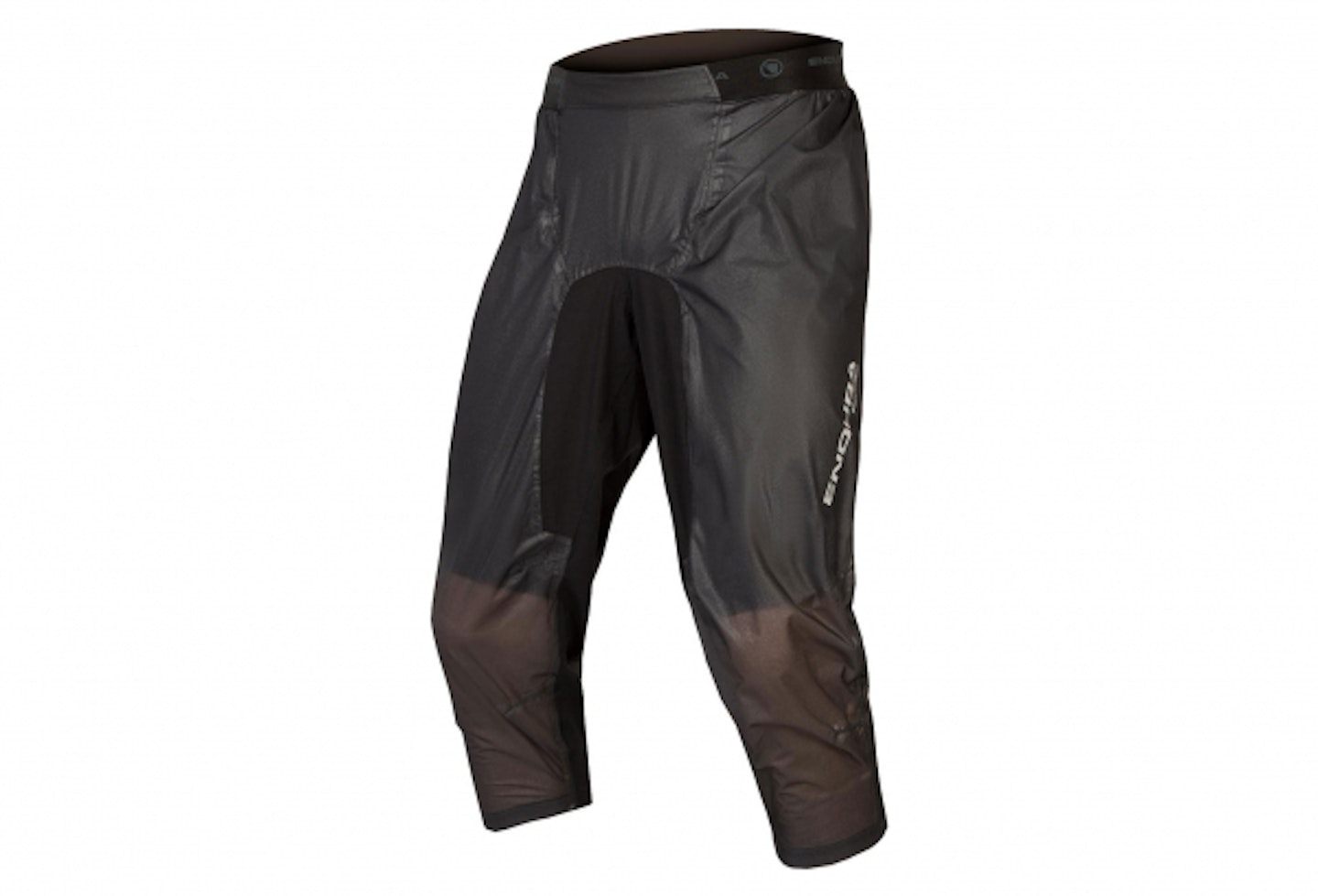
www.leisurelakesbikes.com
There are few things more annoying than arriving to where you’re going to pitch up for the night and having wet trousers; not only does this mean they’ll be soggy the next day, it’s just uncomfortable and morale-sapping.
These are packable and are to be worn over your shorts. They have an ExoShell20ST fabric that is lightweight and breathable – the seams are fully sealed to ensure the maximum amount of waterproofing, and an elasticated waistband with a silicone gripper keeps the pant placed at the hips while not letting any water in.
Pros
- Good idea for keeping dry
- Nice thinking around where needs to be tight to the body to keep you dry
Cons
- We would worry about breathability with these and you or your legs getting too hot
Best legwear for rough rides
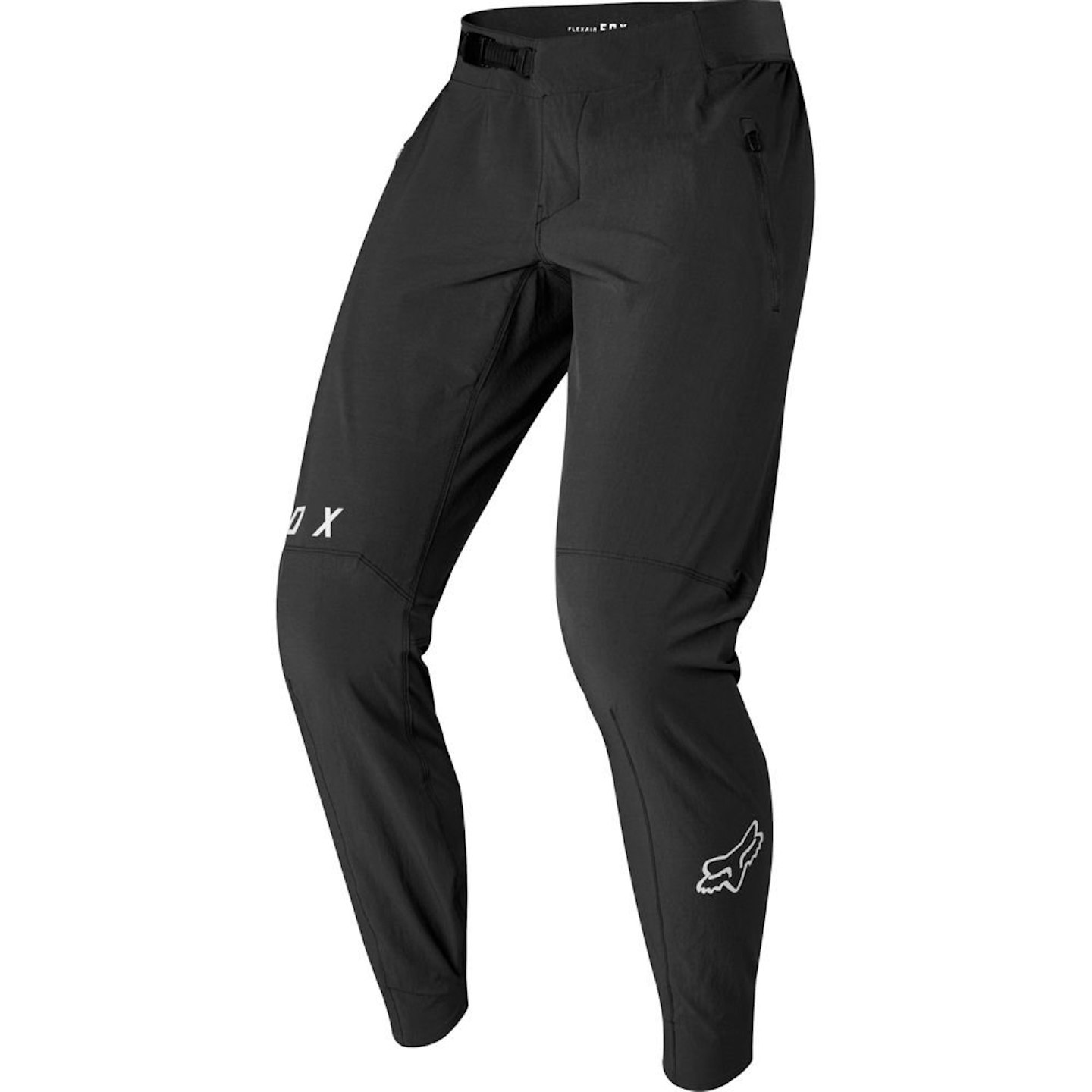
You'd probably find this Fox Racing Flexair Pant more on mountain bikers, which is why their rugged durability is excellent for an adventure on the gravel roads or eBike touring. They’re ultralight, and the construction uses high-wicking TruDri fabrics to draw sweat away from the body. TruMotion properties enhance the trouser’s flexibility and are super breathable.
Pros
- Rugged
- Durable
Cons
- Tight at the bottom of legs
Best style

www.tradeinn.com
These are super casual pants from Sportful and have a chino style with elasticated ankles to keep the fabric away from the chain and gears. The Polymade material is water repellent thanks to being treated, and it’ll also keep away road spray and light rain; you’ll need something more waterproof for heavy rain showers. Three pockets and belt loops finish this off, making sure it’s practical yet wearable on the bike.
Pros
- Great for around camp / off the bike
- Wearable on the bike
Cons
- We would be concerned over their wet weather repellant material
Bib Shorts
Best shorts for comfort

www.awin1.com
If you’re after something a little bit more ‘cyclist’ in style and function, these bib shorts with easy access side pockets from Rapha have been designed for bike touring. The lightweight construction means they excel in extreme conditions and are suitable in temperatures as high as 30 degrees while utilising Rapha’s Shadow fabric which is water resistant; you’ll be dry as you ride.
Pros
- Well respected brand
- Very comfortable
- Huge temperature range
Cons
- Not the easiest to get on and off
FAQs
Charging on the go
A lovely B&B, hostel or hotel is really the best option. On most eBikes, the battery can be removed and carried to your room. However, some do need to be plugged into the bike - if this is the case for you, it's best to ask ahead of time to ensure you'll get juice without trouble.
If you’re not staying in a hotel or B&B, you'll need to get inventive in your hunt for power. You could research some public spaces beforehand that are likely to have accessible plugs. You could also get friendly with the cafe or pub and ask if you can plug in while you enjoy some coffee (or two) and a cake.
Another weightier option is the Anker 521 PowerHouse. It's a heavy battery pack, but it's under 5kg and could charge you up in a time of need. It'll only be once though, as once this pack is drained, it too will need a recharge. Still, it can help you on the overnight camps between points of civilisation.
